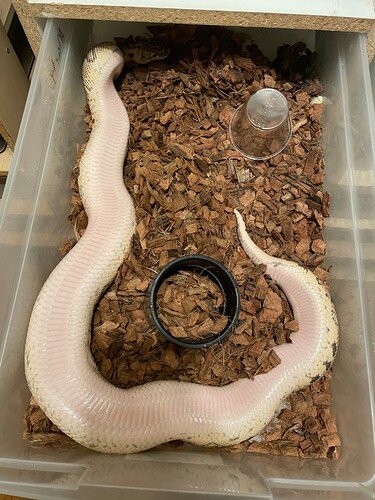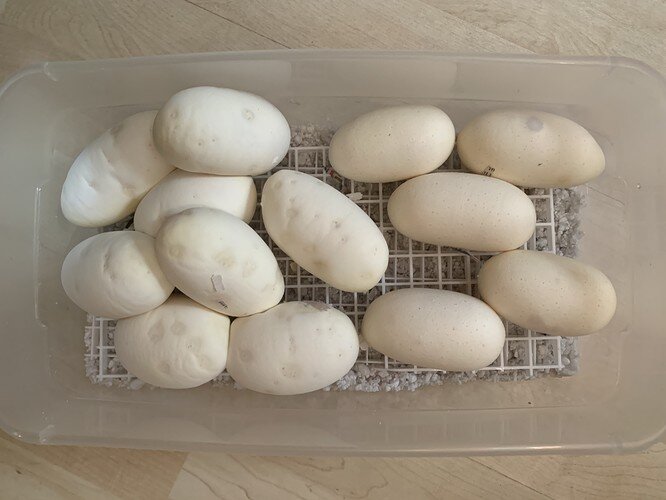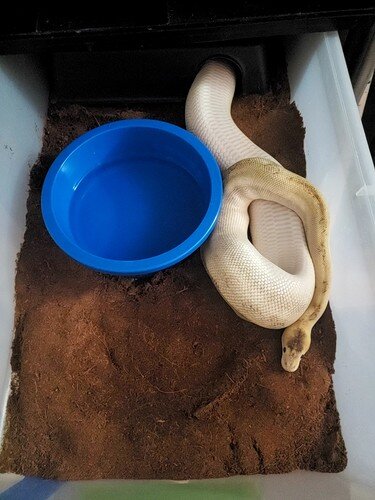He’s dumping his water and laying inverted. I don’t have the heart to tell him that he won’t grow follicles no matter how hard he tries 
I’ve got a few snakes are genetically larger than average, and it’s something I play around with trying understand better through breeding. This male is 2700g. I have a Pastel Het Clown female that’s just shy of 4kg that I pair this snake with most years. Their babies are always 16-18” long at hatch and 80-85g at hatch.
I have another female het pied from Volta type lineage who is very large (~4200g). I’ve never paired her with a similarly large male like this guy but I plan to, to get a better understanding of how size is inherited. I’m aware that it comes from mitochondrial DNA. What I wonder is (and @t_h_wyman I’m sure knows a lot more about than I do) is size simply inherited or polygenic in BPs.
Taking last season as an example, large clown x large clown = all larger than average neonates. Large het pied x small leopard het pied yielded only two larger than average neonates both female.
It’s something I spend a fair amount of time considering, especially since hearing the ‘Genetic Round Table’ episode on MPR a few years ago, where Dr. Wyman elaborates on dwarfs vs pygmoids and how each is inherited.


